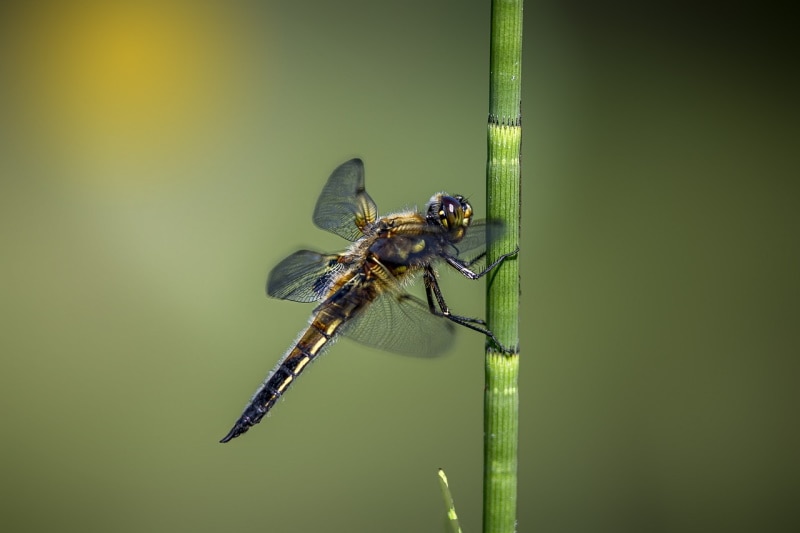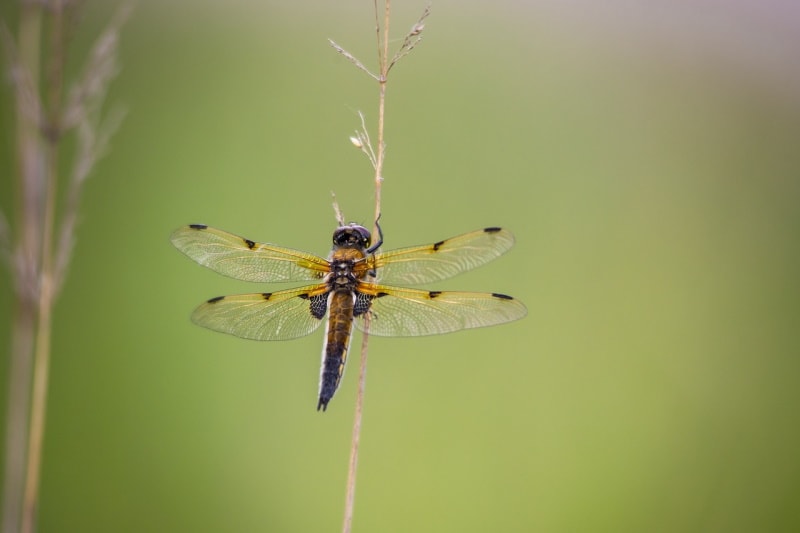What Is the State Insect of Alaska? Reasons, Factors, & History
-
Pete Ortiz
- Last updated:

Out of 50, 48 states have designated state insects. Iowa and Michigan are the only states with no designated insects, while some states have multiple insects or even dedicated categories of insects, such as state butterflies.
Alaska is one of two states with a dragonfly as their state insect, but whereas Washington chose the common green darner dragonfly, Alaska’s state insect is the four-spotted skimmer dragonfly. It was officially recognized in 1995 after a vote by schoolchildren saw it beat the mosquito and the bumblebee to the position.
The Four-Spotted Skimmer Dragonfly
The four-spotted dragonfly has been Alaska’s state insect since 1995. It is a medium dragonfly that is seen from May to September and is most commonly found in marshland areas, as well as in gardens around ponds. It can also be found at lakes and in areas of woodland.
The four-spotted skimmer gets its name from the four spots it has on its wings and because it appears to skim just above the surface of the water. It eats mosquitos and other insects, and its predators include larger dragonflies and some beetles.
Dragonflies in Alaska
There are approximately 30 different species of the dragonfly to be found in Alaska. The Sedge sprite, a small damselfly, is one of the smallest resident species, while the 5-inch darner is the longest. The four-spotted skimmer, at approximately 3 inches, is an average size for dragonfly species in the state.
How Was the Dragonfly Chosen?

Alaska officially named its chosen state insect in 1995, following votes by schoolchildren in the state. It was shortlisted along with the mosquito, the mourning cloak butterfly, and the bumblebee. The dragonfly was chosen especially for its ability to hover and fly backward as well as forward.
The 3 Facts About Four-Spotted Skimmers
Four-spotted skimmers are found throughout Europe, Asia, and North America and are considered beneficial insects because they eat potential pests like mosquitos. They commonly live around or near water sources, which can include natural and man-made.
1. They’re Also Known as Four-Spotted Chasers
In America, this species is known as the four-spotted skimmer, but in other countries, it is referred to as the four-spotted chaser. It gets the skimmer in its name because it usually hovers just above the water level, skimming the water underneath.
2. They Can Fly Backwards

Dragonflies are incredibly agile, athletic insects. They can fly and hover, reaching considerable speeds of over 30 kilometers per hour. Dragonflies can also fly backward, enabling even greater aerial maneuverability.
3. They Spend Much of Their Lives Living Underwater
Dragonflies spend most of their lives underwater, first in their eggs and then as nymphs. They only emerge from the water once they have grown wings and become adults. An adult dragonfly will typically live for a few months with its wings.
What Is America’s National Insect?
America doesn’t have an official national insect or designated insect. There was some discussion about naming the monarch butterfly as the national insect, but it didn’t get past the discussion stage and no further action was taken.
Conclusion
Only two states in the US have dragonflies as their state insect. As well as Washington, Alaska is the other to celebrate this incredible insect.
The dragonfly was one of the first insects, evolving approximately 300 million years ago. Prehistoric dragonflies had wingspans of up to 2 feet. The four-spotted skimmer is a much more modest size, with adults usually reaching about 3 inches and with a wingspan roughly the same.
Spending most of its life underwater as an egg and then a nymph, Alaska’s state insect can be seen skimming above water and patrolling between May and September.
- https://statesymbolsusa.org/symbol/alaska/state-insect/four-spot-skimmer-dragonfly
- https://www.gi.alaska.edu/alaska-science-forum/dragonfly-earns-state-title-mosquitoes-miffed
- https://owlcation.com/stem/State-Insect-of-Alaska
- https://fieldguide.mt.gov/speciesDetail.aspx?elcode=IIODO45140
- https://uwm.edu/field-station/four-spotted-skimmer/
- https://www.adn.com/alaska-news/science/2019/07/20/the-dragonfly-alaskas-state-insect-is-a-nimble-flying-machine/
- https://www.adfg.alaska.gov/index.cfm?adfg=wildlifenews.view_article&articles_id=70
- https://texasinsects.tamu.edu/dragonfly/
- https://www.threeriversparks.org/blog/fun-facts-about-dragonflies
Featured Image Credit: Hector Ruiz Villar, Shutterstock
Contents


